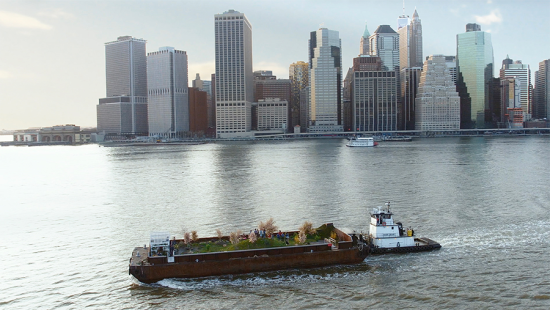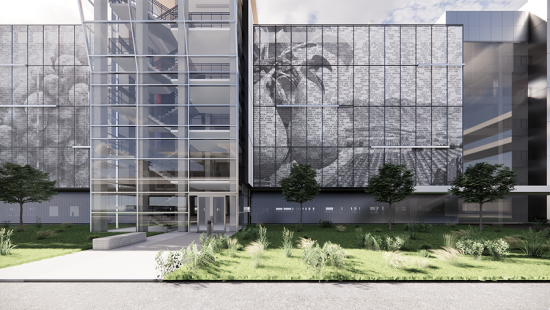Defiantly Optimistic: Centering Humanity in Our Institutions
Associate Professor of Art and AAP's Associate Dean for Diversity and Equity Jen de los Reyes shares thoughts on art, agency, and making change by changing the way we work toward Diversity, Equity, and Inclusion (DEI) at AAP and Cornell.
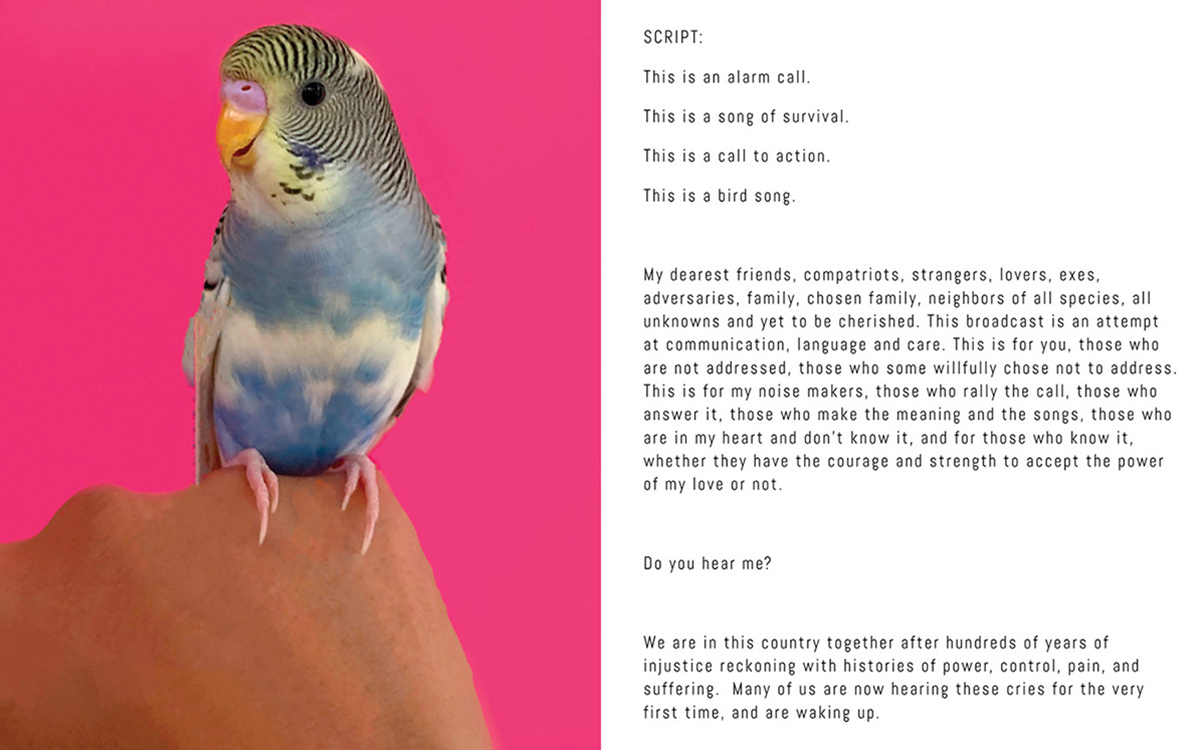
Jen de los Reyes, Associate Professor of Art and the Associate Dean for Diversity and Equity at the College of Architecture, Art, and Planning (AAP), is an artist, educator, writer, and radical community arts organizer. She comes to Cornell by way of the University of Illinois, Chicago, where she was Associate Director of the School of Art & Art History for seven years, and prior, Portland, Oregon, where she directed Portland State University's flexible residency Art and Social Practice M.F.A. program, the first of its kind in the U.S.
Describing her background and tracking the evolution of her thinking and creative practice, Reyes references a line by activist and theorist Saul Alinsky, situating her education within "the local music scene of the mid '90s infused with the energy of Riot grrrl and DIY, and then in its university." Today, her practice is as much about working with institutions as it is about creating and supporting sustainable artist-led culture.
Reyes has worked for more than a decade on public forums for art and artists. In 2007, she founded and directed Open Engagement, an international organization that hosted annual conferences on socially engaged art from 2007–2018. After years of large-scale organizing, Reyes is currently shifting her focus to work at the scale of her life, including The Disappearing Birds of North America: 389 Birds on the Verge of Extinction, a multifaceted project (in-process, image and text above) in which 389 artists depict a bird in danger of extinction. The donated artist images will serve as an archive of contemporary illustrations that organizations dedicated to conservation and ornithology can use for fundraising and awareness campaigns, ultimately culminating in a series of radio segments highlighting the birds and background information, as well as a book and exhibition.
Reyes is based in Ithaca, New York, and Chicago, where she is a founder/resident at SIDE by SIDE artist's residency and Garbage Hill Farm, a small-scale, artist-run urban farm, two parallel projects that model personal and social sustainability, daily life, and arts and culture that can and should exist side by side.
1
In coming to AAP, you'll take on both a teaching appointment as Associate Professor in the art department and a new leadership role at the college as Associate Dean for Diversity and Equity. In what ways is this an exciting direction for you in your career as an artist and educator?
This is a meaningful direction for me personally and also for the work surrounding DEIBJ [Diversity, Equity, Inclusion, Belonging, and Justice]. Throughout the application and hiring process I spoke candidly about my criticism of DEI work, and even shared about a public program I am organizing titled DIE D.E.I. This title, and my public critique, is not about putting an end to this necessary work but about moving away from many of the harmful ways many institutions have been approaching it.
Literally closer to home, I am invested in the transformative possibilities of sharing domestic space as a community resource. In 2020, I became the first homeowner in my immediate family and started a backyard urban farm — Garbage Hill Farm in Chicago.
This turn toward community-sustained agriculture and land-based projects has me very excited about what being in Ithaca will mean for this aspect of my work and eventually being able to connect this to some of my teaching. One of my long-term goals is to start an arts-ecology-centered conservancy project in New York State in which the land is not a bucolic backdrop for art production but the focus of the work. The project will reframe the very whitewashed, utopian, back-to-the-land movements for our current moment of urgency and center the histories and relationships of Black, Brown, and Indigenous people to the land — from their being original stewards and caretakers of the land, to the Black Homesteading work of the Exodusters, and the Latinx and Asian peoples who were the backbone of the agricultural landscape of this country that continues to feed the majority of people in the U.S.
There will be a food cultivation focus of this project that acknowledges that currently only 2% of agricultural land in this country is owned by Black, Brown, and Indigenous people and that addresses the fact that these communities have been excluded and separated from the land. This project will seek to not only acknowledge those painful histories, but also celebrate our contributions and begin to heal and repair relationships and connections.
"I see institutions as a medium I work with as an artist. I am an institution builder, collaborator, and change maker. I think artists actually excel at this kind of work because of our critical thinking combined with experimentation and, in the case of some, a strong collaborative spirit."
2
What thoughts can you share that might bring some clarity to a conversation about artists such as yourself who practice, teach, and help to shape both cultural and educational institutions?
I see institutions as a medium I work with as an artist. I am an institution builder, collaborator, and change maker. I think artists actually excel at this kind of work because of our critical thinking combined with experimentation and, in the case of some, a strong collaborative spirit.
I refer to myself as defiantly optimistic, and this extends to my work in long-term systems change. I am a believer that our institutions can become more tender, vulnerable, and human. Part of how we center our humanity within institutions is to not lose sight of the fact that institutions are built, upheld, and maintained by people. That no matter how ingrained and established they may seem, we need to remember that we also have the power to change them.
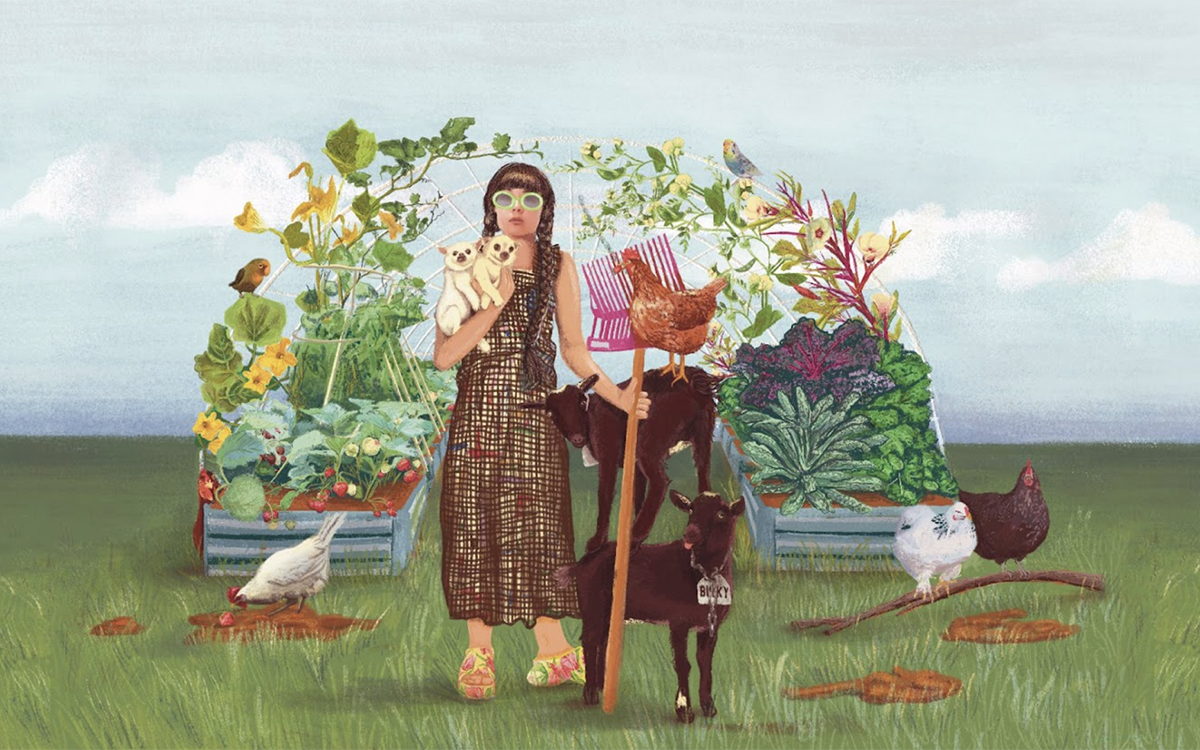
3
Social Practice Art — that is what many would call what you do, yet when referencing your practice and title you say "an artist of sorts, a farmer of sorts." (You also write and research movements in contemporary art, and more.) What do you call what you do? How would you describe the substance of your practice?
The quote, "an artist of sorts, a farmer of sorts," comes directly from Wendell Berry. In my bios I like to be able to reference and quote some of the important figures who have shaped my work and research. I also use a line that gives a nod to radical organizer Saul Alinsky, "she was educated first in its local music scene of the mid-'90s infused with the energy of Riot grrrl and DIY, and then in its university." His own bio takes a similar format that reminds us that often the most formative educational experiences happen outside of the classroom.
How I work today is rooted in what I learned in those teenage years as a show organizer, listener, creator of zines, and band member. Almost all of the skills I use every day as an artist, educator, and administrator I learned as a young punk in high school in the mid '90s. Music was a way to build a scene and community. I started playing in bands and booking shows when I was 15 years old. Being part of the music scene in my city is how I learned to organize. The zine culture of Riot grrrl taught me how to self-publish and distribute what I wrote. Playing in bands made me a better collaborator and taught me how to really work with and support other artists, when to take space, and when to make space.
As for what I call what I do, I am veering away from the framing of social practice, or socially engaged art, as an area of specialization, both for my own work and also in my teaching because all art students need an expanded foundations education. Understanding that artists need different skills today is urgent. We need artists to be able to navigate social systems, political and legislative structures, to be skilled in non-violent protest and demonstration, and to understand how to organize creatively in their communities.
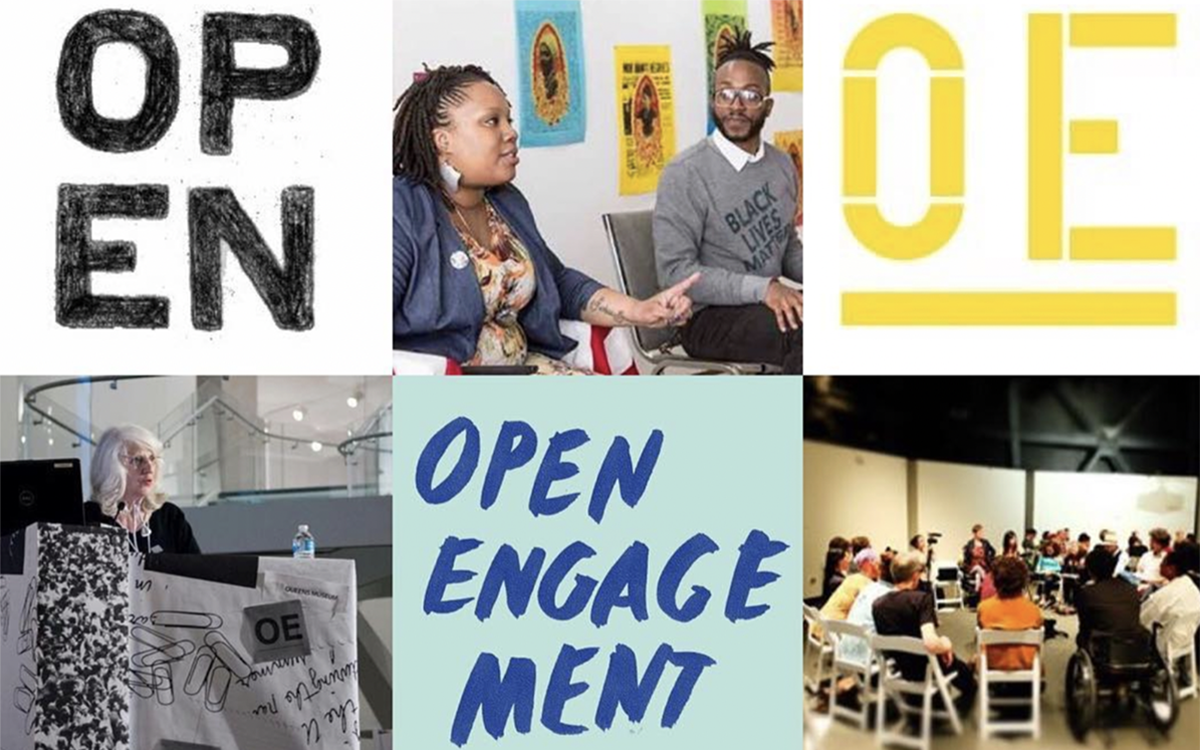
4
What have you learned from practice that you feel must carry over to your role as an educator who helps others build an art practice for themselves?
I often remind people that when I started organizing the first Open Engagement in 2006, I was a student. The discourse I wanted to engage in around art was not happening at my school, so I organized the situation that would make this possible. This project ended up being a major part of my work and career for the next 14 years. I am constantly reminding students of their agency to make things happen in the world.
5
What have you learned from teaching that directly or indirectly informs your practice?
That teachers and lessons are all around us.
Stay connected! Follow @cornellaap on Instagram, Facebook, Twitter, and LinkedIn; and subscribe to our AAP bi-weekly newsletter.



